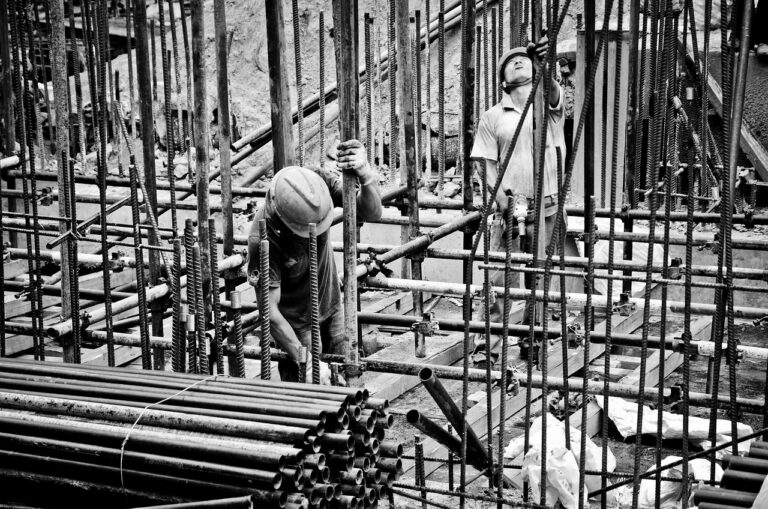How Contractors Should Prepare for Inevitable Disruption Claims
Cashing in on notice of delay (NOD) or disruption claims is traditionally a black-hole for contractors, who seldom are adequately compensated for work disruption not of their own doing. In large part, I believe contractors can do better in representing their claims to owners. The reason disruption claims are so seldom honored is because although they may be qualified, they are seldom quantified or represented in a cohesive fashion that clearly illustrates the relationship of delay to overspend.
A disruption claim may be well qualified: for example, an owner may delay a critical delivery that clearly disrupts the contractors work; however, the slope is much more slippery in terms of tallying up the damage: this is where the contractor is hard-pressed to make a convincing argument. The chief reason can be attributed to poor project management and project controls on the contractor’s part, and an inability of a scheduler to represent a cost-loaded timeline representing the delay.
Naturally, delay background information must be established before the claim schedule can be developed. In absence of that, a more typical circumstance is that only an exercise in deep forensics will serve to facilitate and substantiate the claim – often information that is not readily available, and time consuming to generate. Negative past experiences contractors have had with delay claims is often it itself enough to dissuade most contractors from pursuing a claim with a scheduler, who more often than not is completely over his head: he may be able to generate a baseline schedule, but claim schedules are the equivalent of reinventing the wheel for too many.
Contrary to these perceptions, delay and disruption claims can be adequately represented by a scheduler provided he has the background material form the contractor, and that he has the ability to do it. Schedulers who use cost-loaded schedules must have an advantage over those who must cobble together from scratch without the benefit of cost-loading.
Claims generated from cost loaded schedules can be represented showing cost as it pertains to a given delay, whereas in absence of costloading, a timeline is issued in concert with the estimated costs. If the claim is to be scrutinized by a judicial body, it will have to include precedents for the methodology – of which there are several recognized. The scrutiny by the court will be much more severe than that of an owner. A contractor will always prefer to negotiate a delay claim before litigation, as legal costs inevitably cancel out the value of the claim.
Accordingly, many contractors suffer unnecessarily through their delayed projects, often with the belief that they would be wasting their time trying to establish and enter a delay claim. I say unnecessarily, because there are proactive strategies –many of them that should be done by rote that a contractor can implement in such a way that he can be more prepared to protect himself from the liability of eating delays. Following is my short-list of proactive NOD and claim schedule management.
- Failing to prepare, is preparing to fail: if your delay and schedule tracking system isn’t set up form notice to proceed, it will be that much more problematic to generate cohesive claim schedules. The best systems are those tried and true, and for which there is full-team buy-in.
- A claim schedule must be based on actual progress vs. the baseline schedule. If these are not in order, a delay claim may very well be a waste of time (see #4).
- Maintain the oversight and lock-step tracking of your schedule with a competent scheduler. If he doesn’t have the chops, or the schedule that is maintained is not sufficient to represent the delay, you will be unable to make a coherent effort, or represent the delay in terms of time and money, to a third-party that must approve it.
- Know your agency: some public work agencies – such as the notorious New York’s School Construction Authority (SCA), stonewall your efforts by drafting unreasonably copious, and contractor-hostile scheduling specifications to the point where you realize you could hit the lottery jackpot before they would even entertain your claim. For this reason, many schedulers (me included) simply turn away the work.
- Lock-in the NOD sequence into your schedule the moment it occurs, and put the owner on notice that a delay has been encountered. Even if you don’t know the term of the delay, the memorialization of it is critical.
- Develop the predecessor and successor sequences of your delay trajectory as early as possible: remember: in establishing your delay claim, time is always working against you.
- Maintain background material that will later inform a user-friendly narrative that must accompany the issuance of your bar charts and reports.
- Hold your subcontractors feet to the fire until they issue the requisite documentation you need to backup your claim.
- Maintain records of past delay claims, including the metrics used to quantify them. That way, you don’t need to reinvent the wheel each time you encounter a delay.
- Last but not least – avoid!! – projects that have the built-in liability of over-compression, as these are the most prone to delay, and projects that are under the thrall of hostile agencies.










